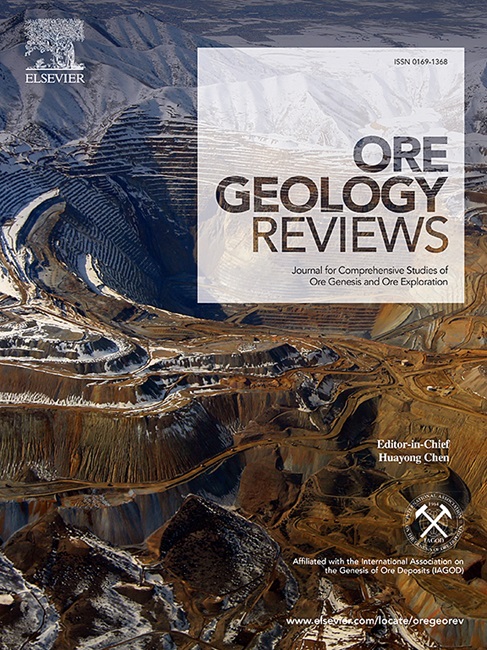Machine learning for deciphering ore-forming fluid sources using scheelite trace element geochemistry
IF 3.2
2区 地球科学
Q1 GEOLOGY
引用次数: 0
Abstract
Identifying the source of ore-forming fluids is crucial for constraining ore genesis and guiding exploration. This study introduces a novel approach that leverages the geochemical properties of scheelite and the latest advancements in machine learning algorithms to decipher ore-forming fluid sources. A variety of supervised machine learning methods, including Decision Tree, Random Forest, Multilayer Perceptron, Extreme Gradient Boosting (XGBoost), Light Gradient Boosting Machine (LightGBM), k-Nearest Neighbors, and Logistic Regression, are employed to identify the source of scheelite ore-forming fluids using high-dimensional information of scheelite trace element data. This study demonstrates that XGBoost (accuracy: 93.5%, AUC: 98.8%) and LightGBM (accuracy: 93.2%, AUC: 98.6%) classifiers efficiently and accurately classify high-dimensional trace element data of metamorphic-hydrothermal and magmatic-hydrothermal scheelite. Interpretation of the models using the SHapley Additive exPlanations tool reveals that Sr, La, Eu, Nb, Pb, Ta, and Mo of scheelite are the most indicative elements for predicting ore-forming fluid sources. Additionally, the discrimination of scheelite data by the XGBoost and LightGBM algorithms suggests that the Darongxi W, Muguayuan W, Yangjiashan Au–Sb–W, and Longshan Au–Sb–W deposits in the Xiangzhong metallogenic province (XZMP, South China) are likely magmatic-related, while the Daping Au, Woxi Au–Sb–W, and Zhazixi Au–Sb–W deposits are likely orogenic. This reveals the complexity of regional Au–Sb–W mineralization in the XZMP. Importantly, this research highlights the untapped potential of integrating scheelite trace element geochemical data with explainable machine learning technology to determine ore-forming fluid sources.

求助全文
约1分钟内获得全文
求助全文
来源期刊

Ore Geology Reviews
地学-地质学
CiteScore
6.50
自引率
27.30%
发文量
546
审稿时长
22.9 weeks
期刊介绍:
Ore Geology Reviews aims to familiarize all earth scientists with recent advances in a number of interconnected disciplines related to the study of, and search for, ore deposits. The reviews range from brief to longer contributions, but the journal preferentially publishes manuscripts that fill the niche between the commonly shorter journal articles and the comprehensive book coverages, and thus has a special appeal to many authors and readers.
 求助内容:
求助内容: 应助结果提醒方式:
应助结果提醒方式:


